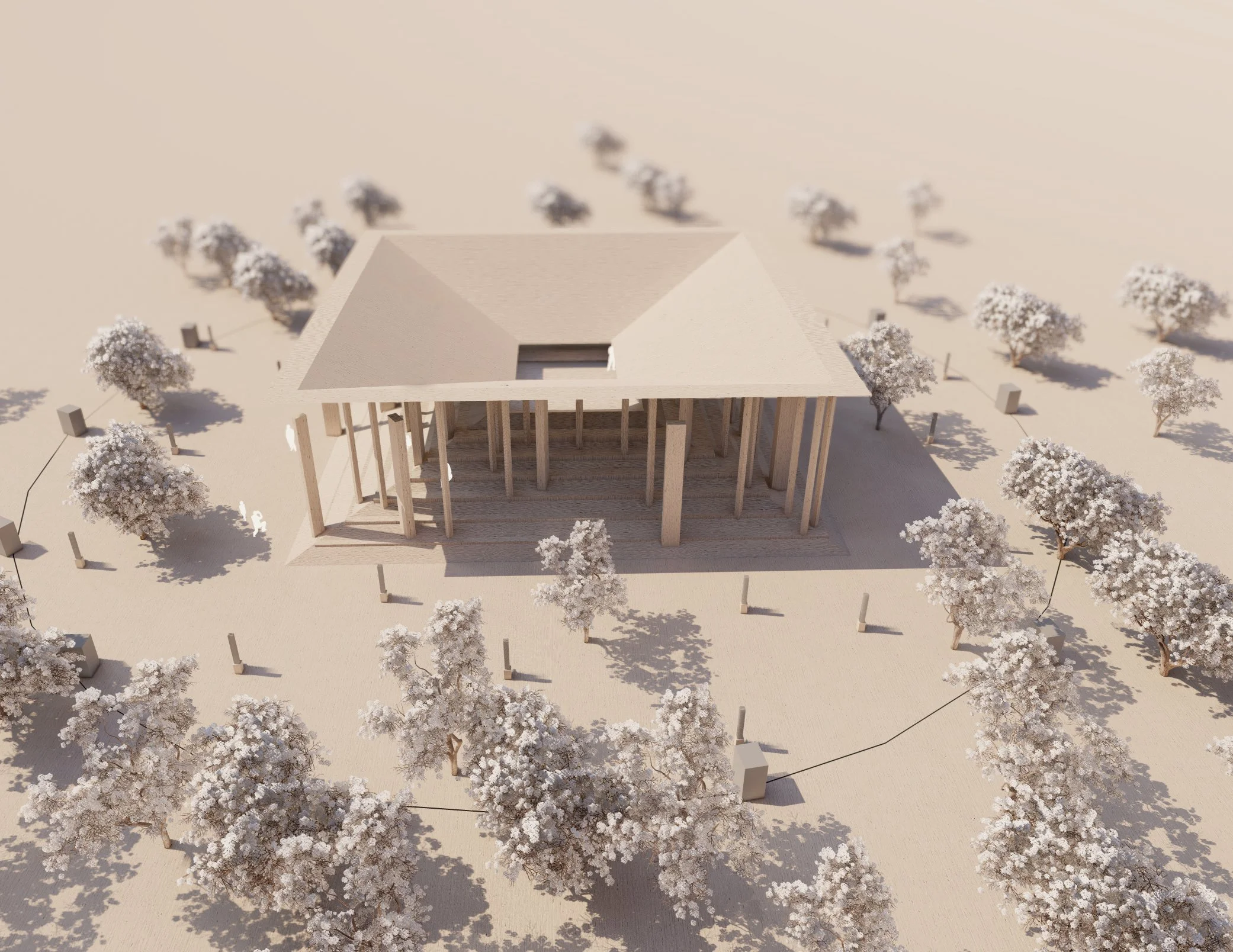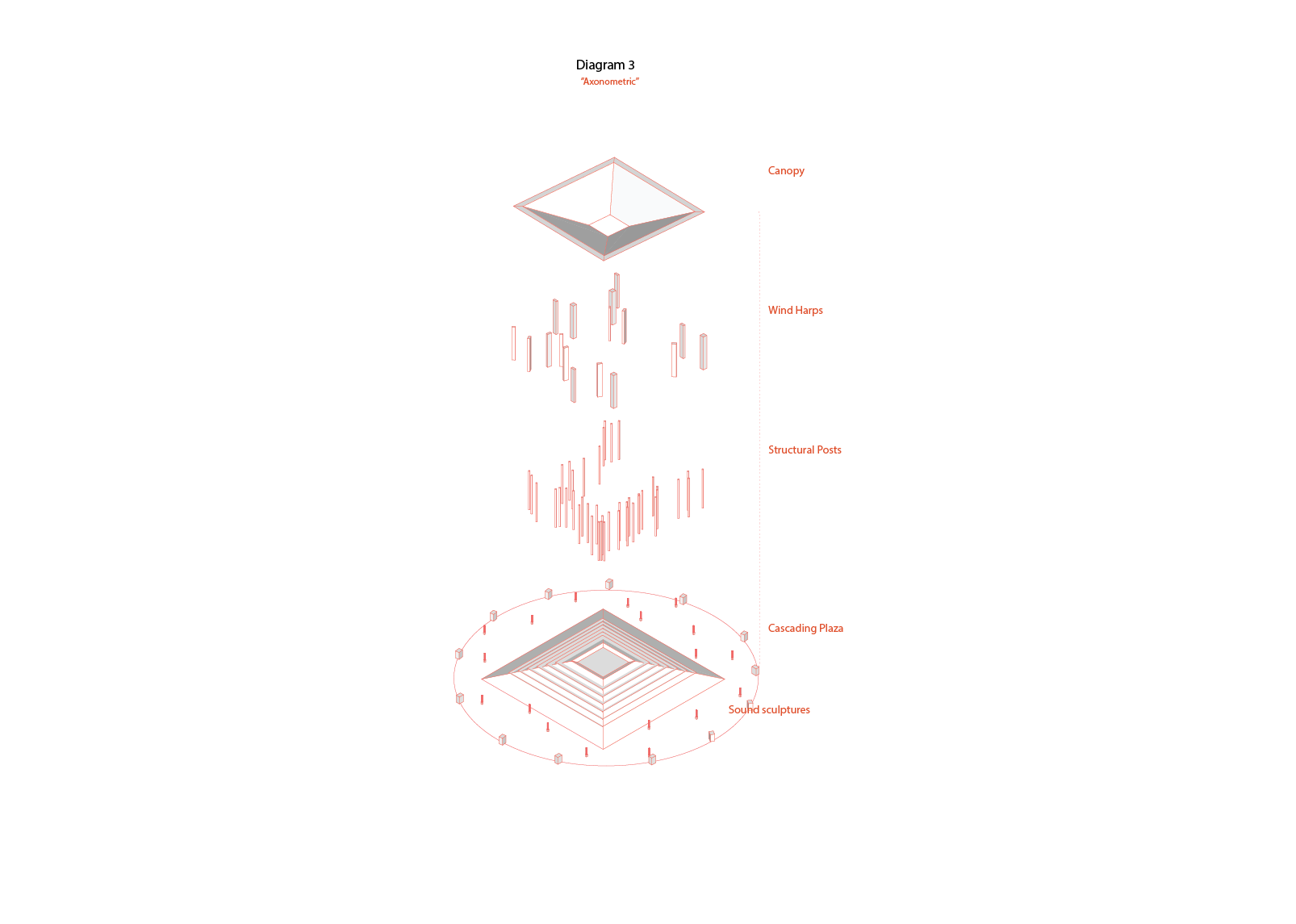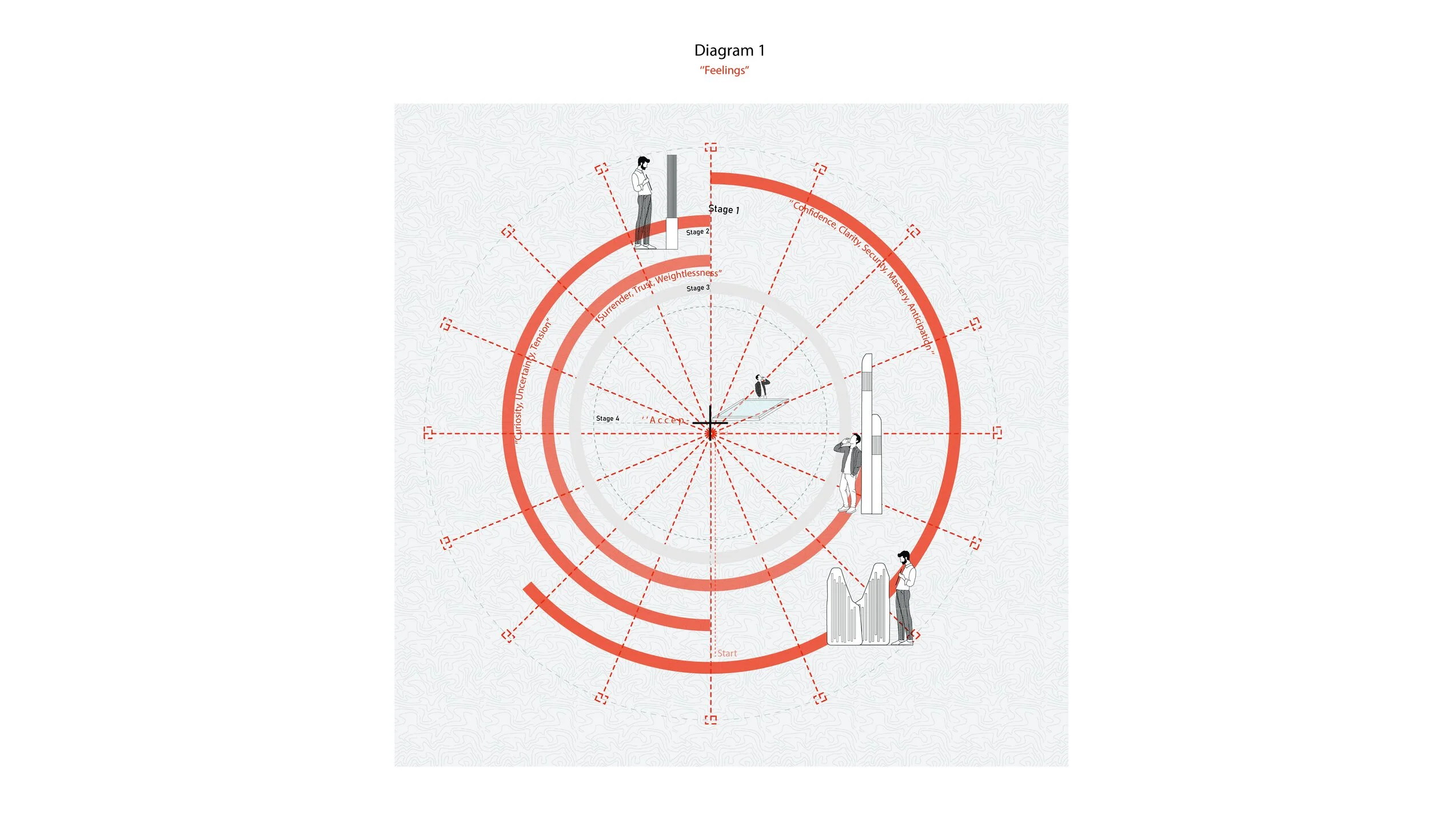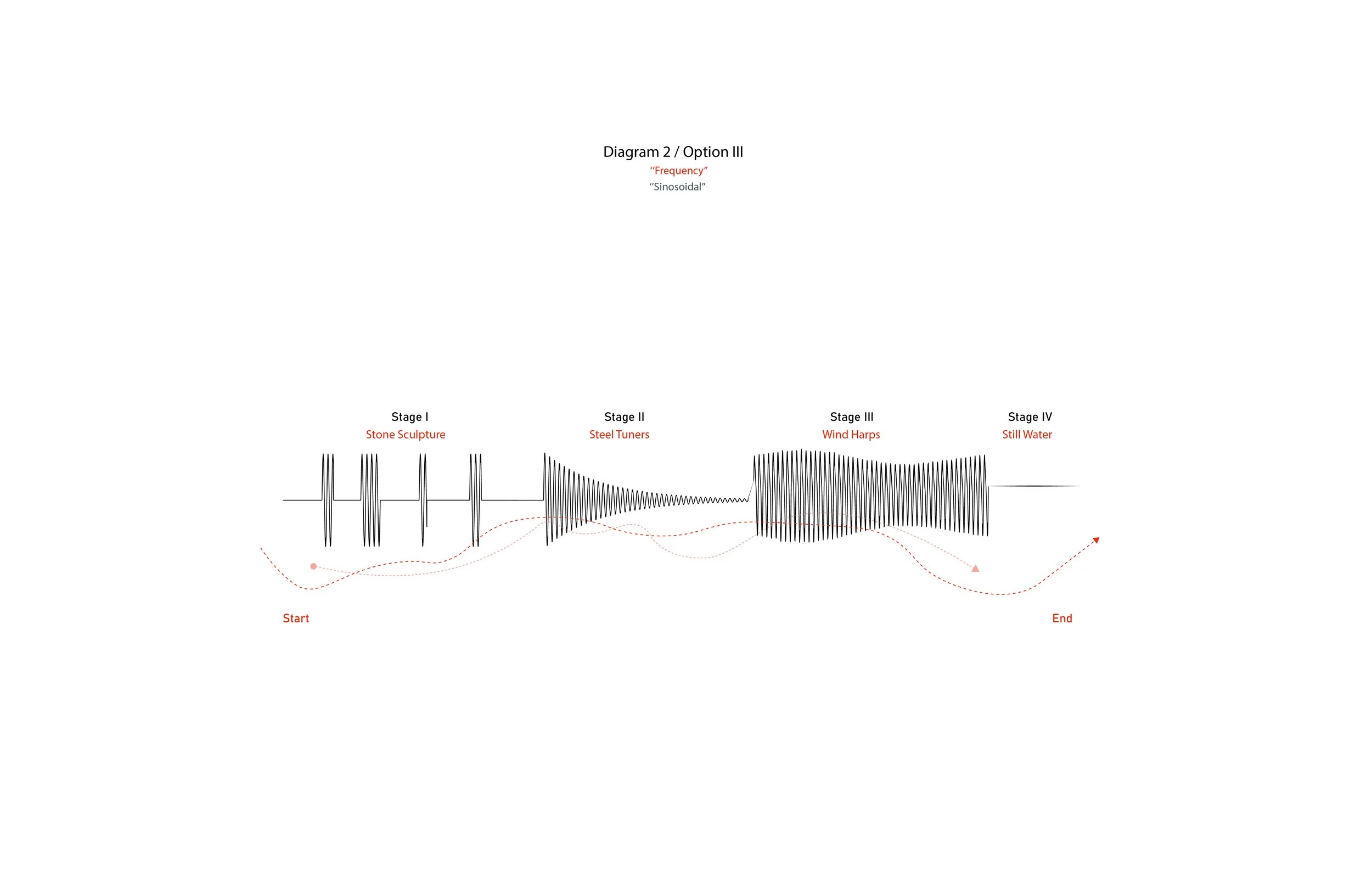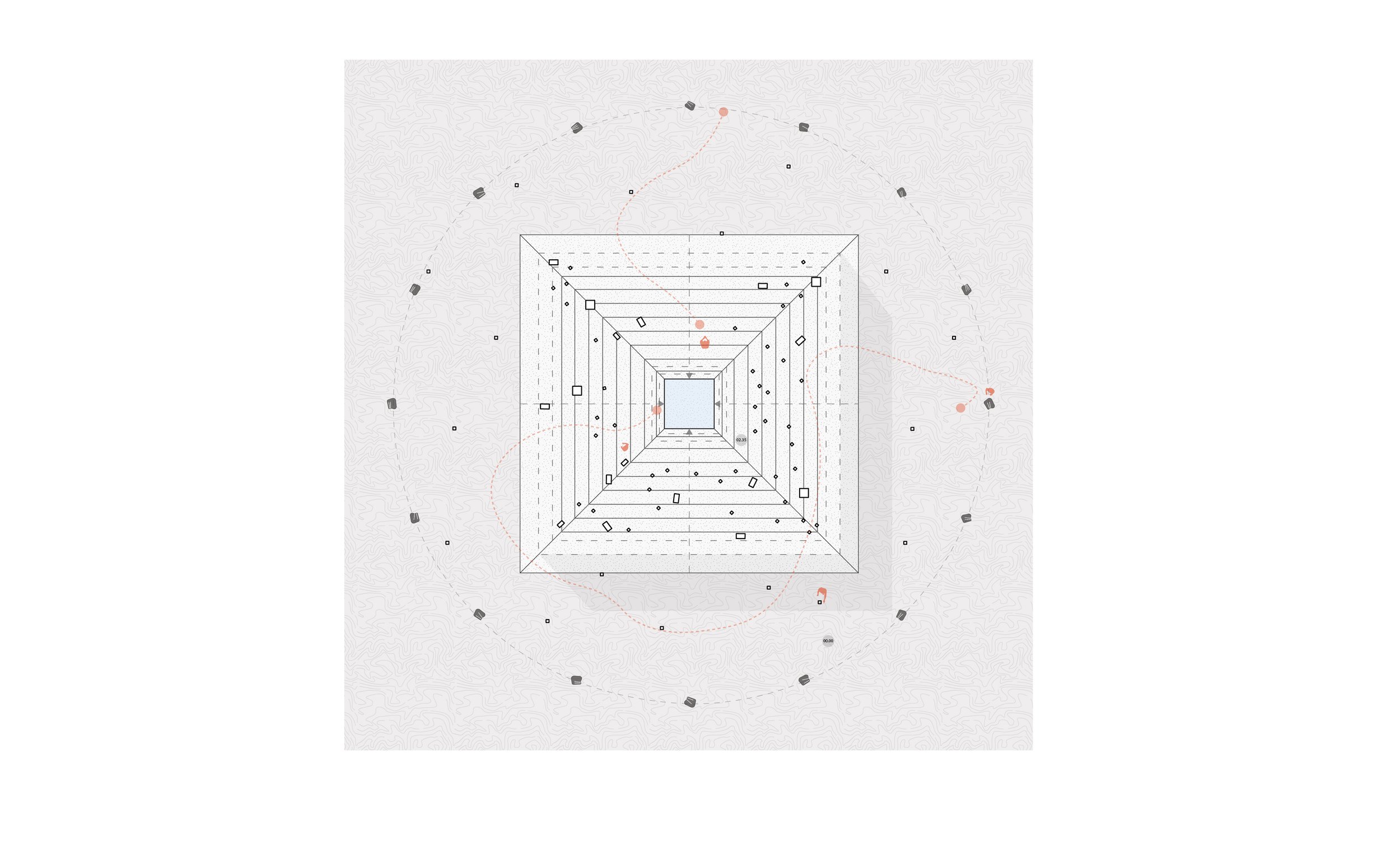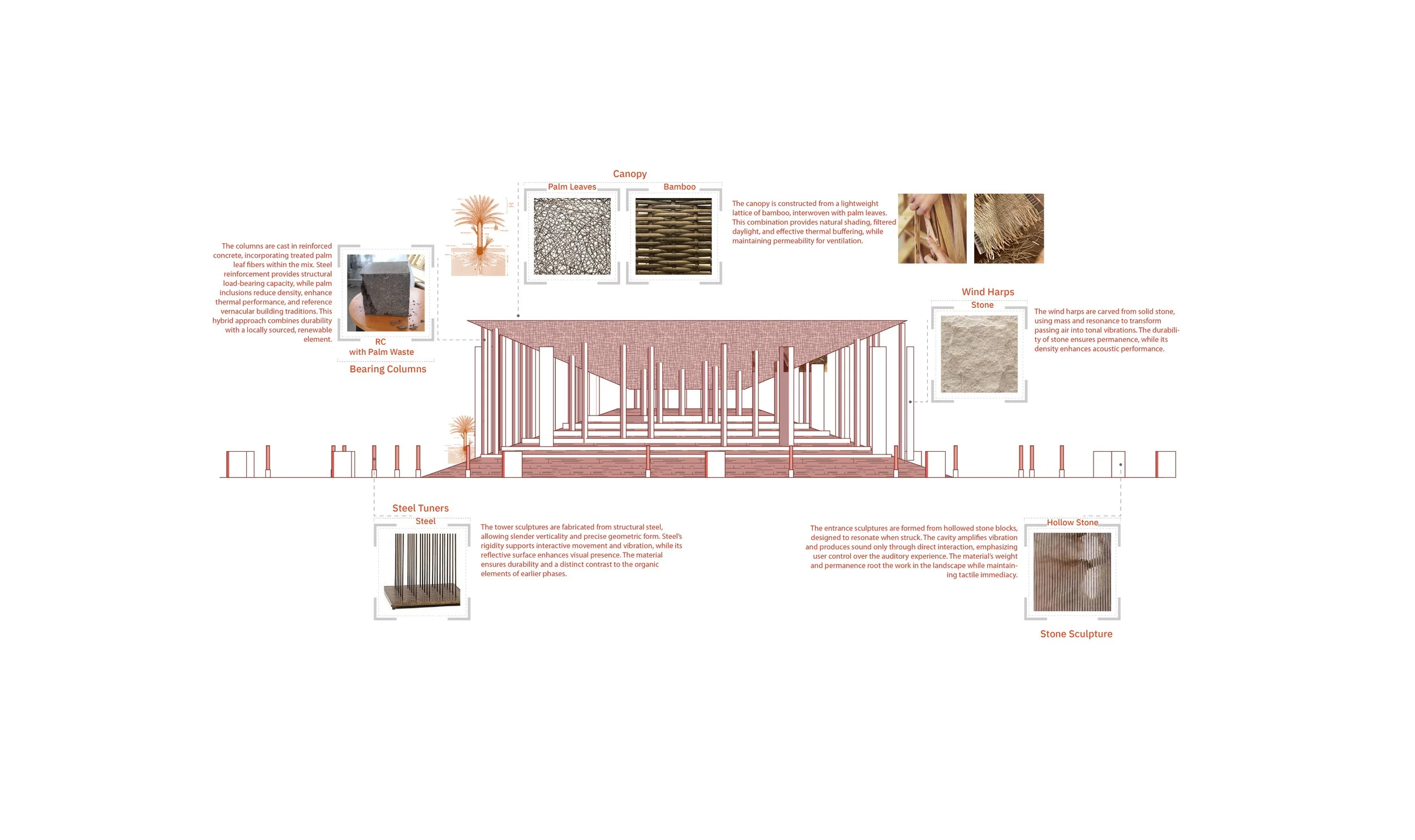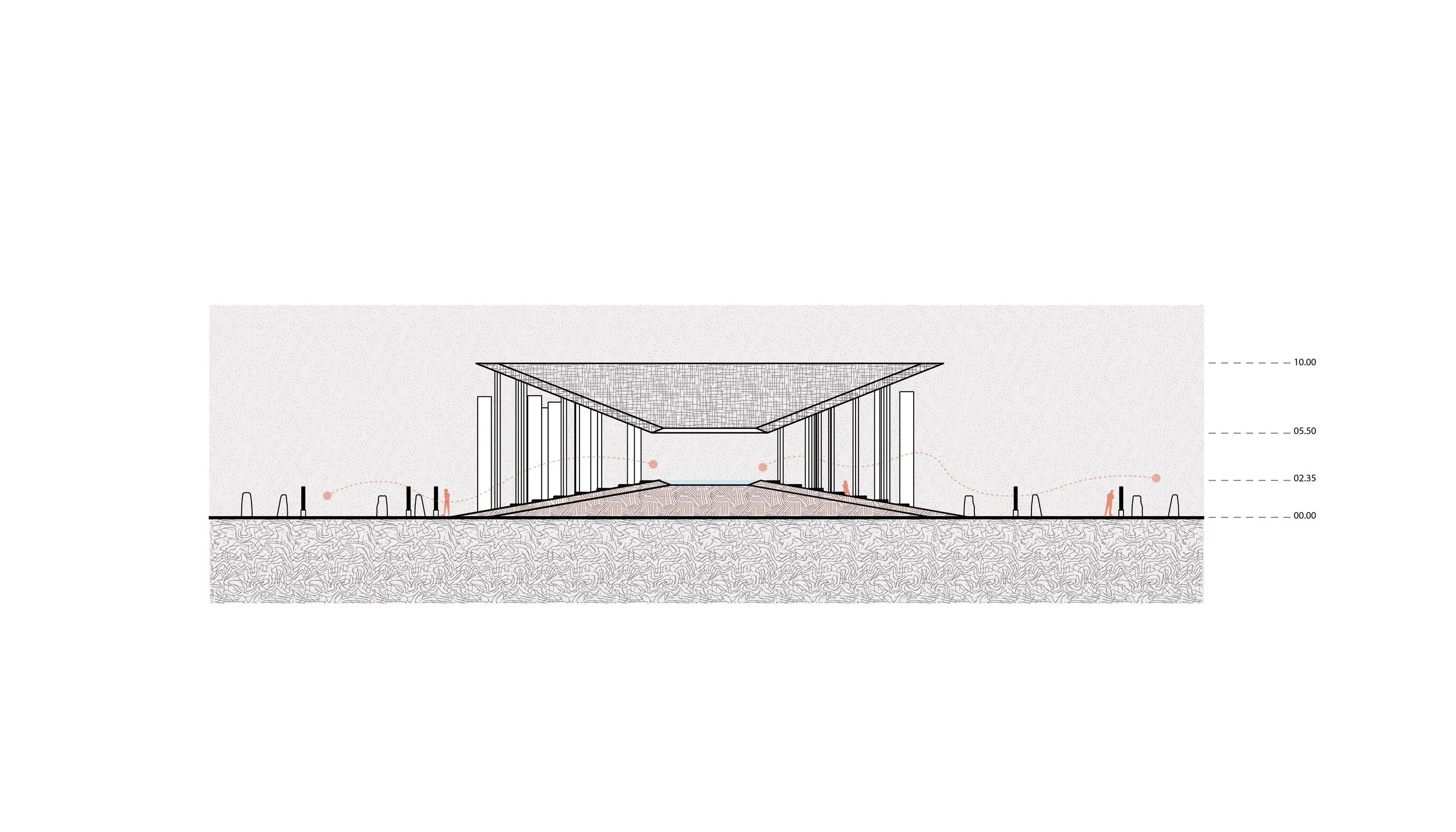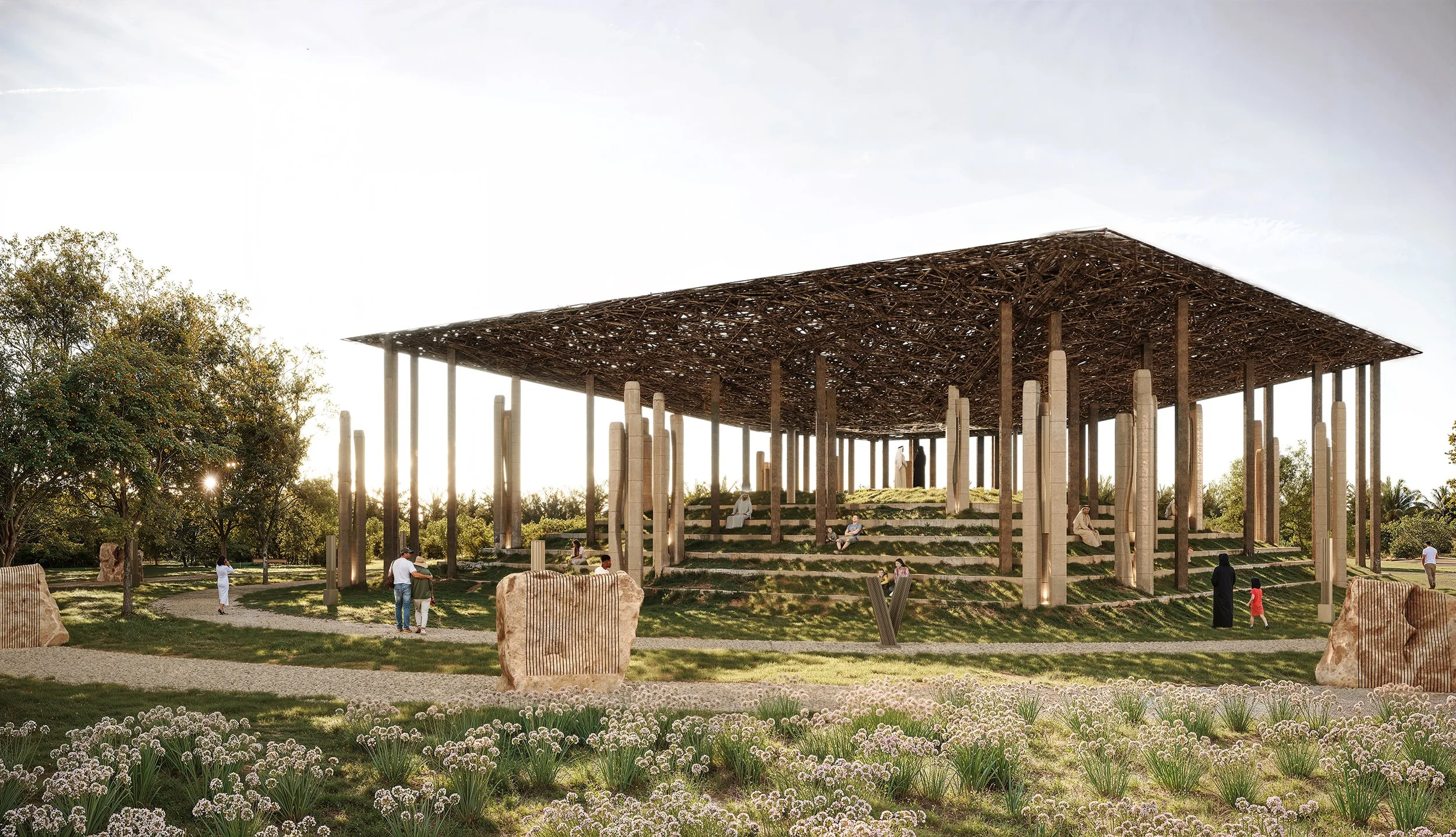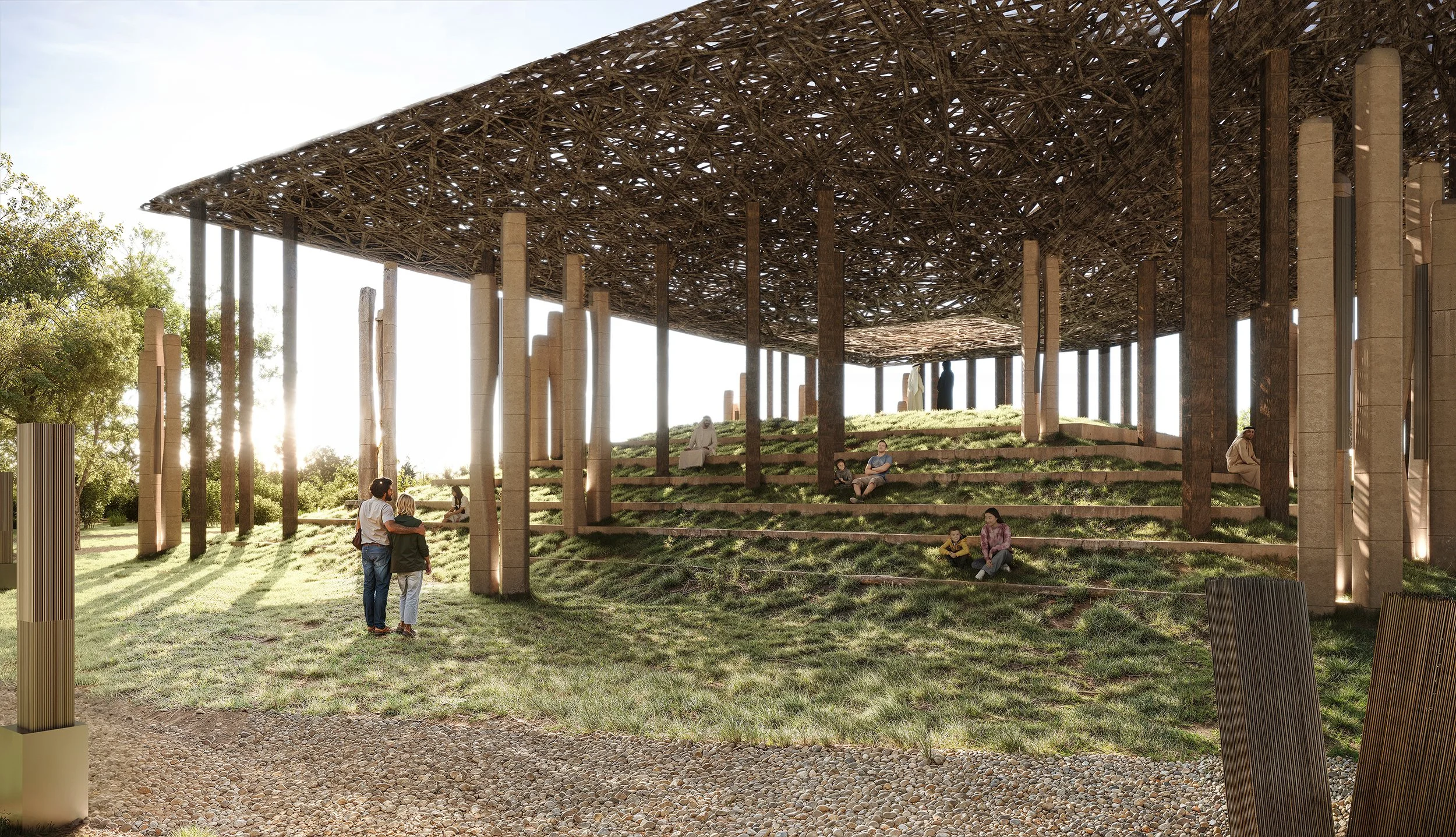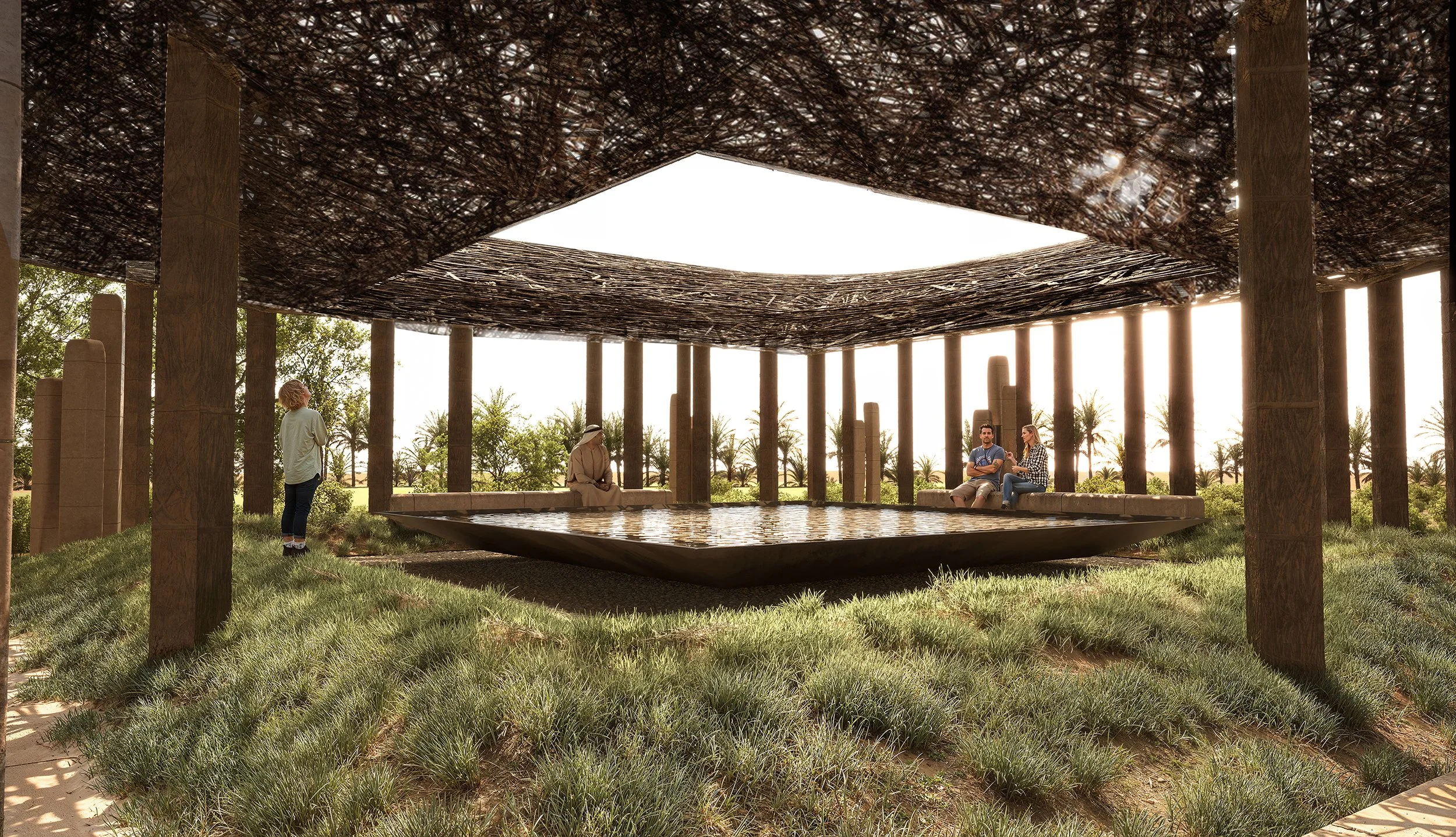Sada Sound Park
Our proposal builds on our studio’s ongoing research and practice in craft, sustainability, and materiality. In previous projects such as Sabil, we explored weaving as both technique and metaphor — a way to intertwine heritage with contemporary public space. In Sada, this ethos takes new form: the suspended canopy cloud revives the ancient practice of weaving palm leaves and fibers as shelter, while our experimental use of palm tree waste as reinforcement for concrete columns opens new pathways for sustainable construction rooted in local resources. Through these gestures, the project repositions craft not as ornament, but as structure, resilience, and identity.
Design Brief
Sada Sound Park is conceived as a contemplative sanctuary within Doha’s fast-paced urban fabric, a place where intangible vibrations are made tangible through material, form, and interaction. Shaped as a radial journey, the park unfolds through four concentric layers, each revealing a different relationship between the visitor and the unseen forces of vibration. Moving through the park becomes a choreography of sound and silence, guiding the body and mind from control to resonance, from surrender to ultimate acceptance.
The journey begins at the outer edge, where sculptural stone forms respond directly to touch. When rubbed or struck, they produce resonant tones that vanish as soon as interaction ceases, embodying our desire to command and shape the world around us. Further in, slender steel columns stand in dense clusters, creating lingering tones as they are gently pushed against each other. These vibrations ripple beyond the initial action, reminding visitors that cause and effect extend beyond control. Deeper within, vertical wind harps made out of stone, where wind pass through the vertical gap between the two columns and plays the strings that are installed in the middle, generating egoless beautiful sounds. Here, visitors shift from makers to listeners, surrendering fully to the rhythms of nature. At the center, a raised circular water basin mirrors the sky. Subtle vibrations appear as ripples across its surface, transforming sound into a visible dance. In this moment, the visitor witnesses vibration without influencing it, experiencing oneness with the unseen forces that bind us.
The park’s material language draws on local craft and sustainable practice. Reinforced palm-fiber concrete strengthens structures while reducing cement use and embodied carbon, giving new life to agricultural byproducts. A suspended canopy cloud, handwoven from bamboo, palm leaves, and natural fibers, forms a breathable shade that filters light while honoring local weaving traditions. Stone and steel anchor the landscape, chosen for their durability, resonance, and timeless weight. Together, these materials merge performance with cultural continuity, creating a space that feels both rooted and transformative.
More than a park, Sada is envisioned as a self-healing temple, a meditative landscape where the visitor’s role evolves from active creator to quiet observer. By interweaving craft, sustainability, and acoustic form, it becomes a living map of the vibrations that connect us to the natural and urban worlds. Here, sound becomes architecture, silence becomes space, and the community is offered a sanctuary where intensity gives way to stillness — a place to listen, reflect, and belong.
For us, Sada is more than a design proposal; it is a continuation of our inquiry into how contemporary architecture can translate intangible forces — memory, vibration, rhythm — into shared civic experiences. By merging craft traditions, ecological innovation, and acoustic imagination, the project offers Doha not only a new park, but a new kind of public realm: one where intensity gives way to stillness, and community finds a sanctuary for listening, reflection, and belonging.

